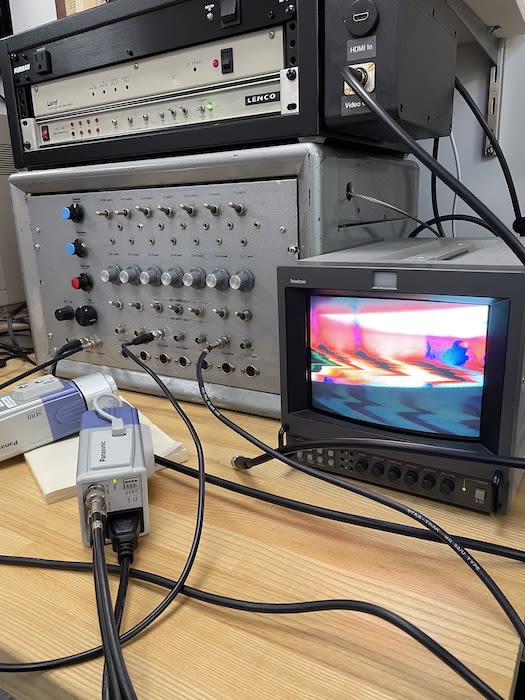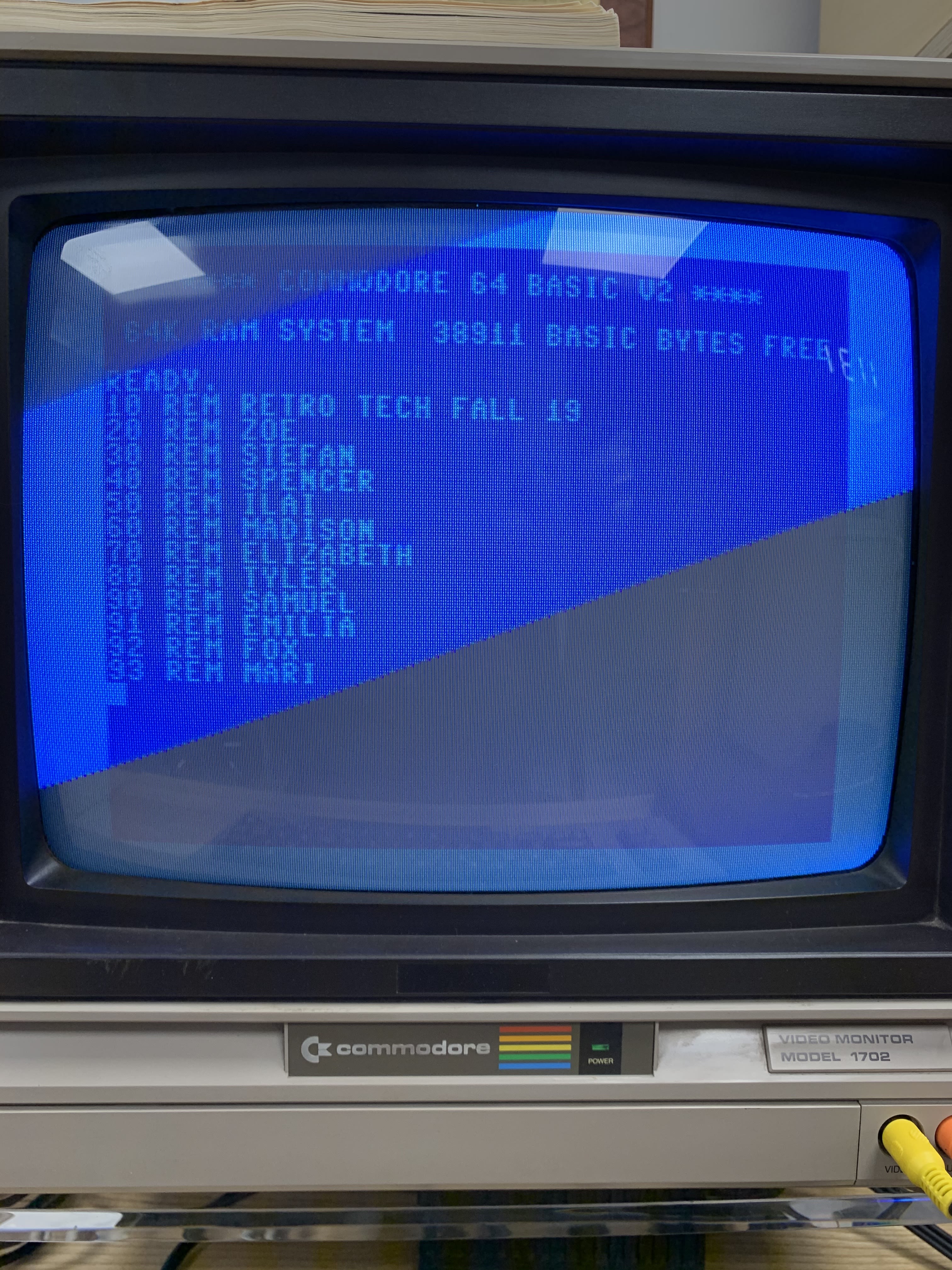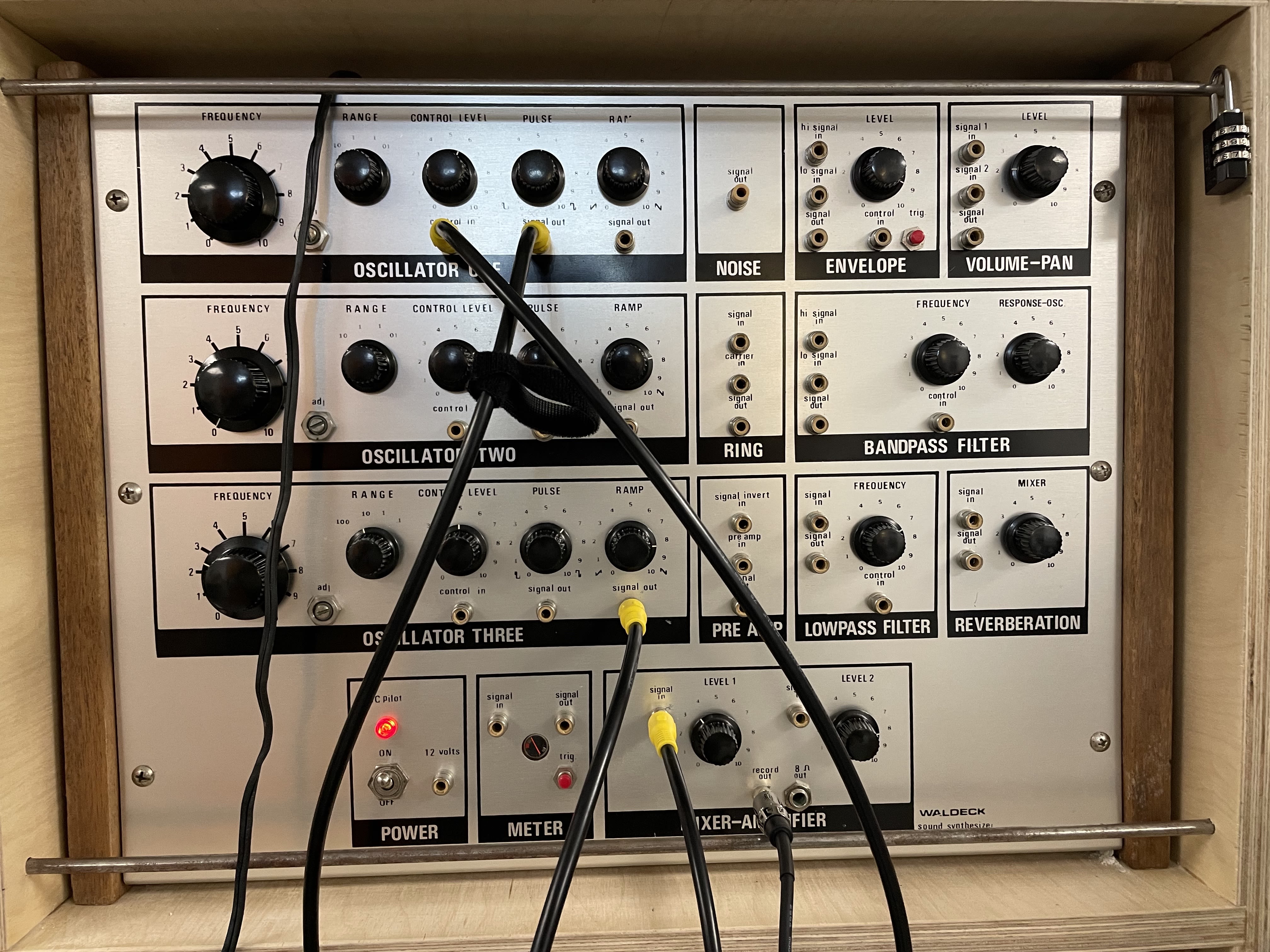Class Spotlight: Retro Tech with Lee Blalock

The Paik Abe Analog Video Synthesizer in use. Image courtesy of Lee Blalock
The Paik Abe Analog Video Synthesizer in use. Image courtesy of Lee Blalock
by Nadya Kelly (MA 2023)
If you took a quick look into one of the classrooms in the School of the Art Institute of Chicago’s Art and Technology Studies department, you might be surprised to find students gathered around blocky computers, thick cables, and bulky knobs.
Motivated by her belief that the best way to gain insight into contemporary technology and today’s programming languages is to travel back in time, Assistant Professor Lee Blalock created a programming class to teach students how to use the early computing era programming language BASIC. With guidance from her students, the class evolved into Retro Tech, an undergraduate studio class that explores the world of vintage technology and programming languages and establishes early computing as an art form.
Student Bárbara Baron's project [#2020-72-H] tools for 2020
Every semester, Blalock uses Retro Tech to introduce a group of emerging artists to the world of computing as it existed in the ’70s and ’80s. In addition to learning early programming languages, students learn how to remake and restore old computer-based work and use early home computers and synthesizers. Even though the students often are not familiar with these vintage technologies, by the end of the semester, students are able to create multimedia projects inspired by the creative computing spirit of the ’70s and ’80s.
“It’s a low-risk class. It truly is about exploring, playing, and learning for the sake of learning,” said Blalock. “One of the exciting things about teaching something that only people my age would use is that everyone starts from scratch. All you need to have is a project in mind, some patience, and you need to know how to find information.”

The Commodore 64 screen, featuring the names of the students in the inaugural Retro Tech class. Image courtesy of Lee Blalock
The Commodore 64 screen, featuring the names of the students in the inaugural Retro Tech class. Image courtesy of Lee Blalock
A large portion of the class is dedicated to learning how to use vintage technology including some of the first home computers, like the Commodore 64 and the Apple IIe, and synthesizers, like the Paik Abe Analog Video Synthesizer and the Waldeck Audio Synthesizer. All technology used in Retro Tech is made available to the students through the Art and Technology Studies department’s Retro Lab, a collection of functional vintage computers, media storage devices, image processors, and synthesizers.
During the class’s programming section, students practice their new skills by completing programming sketches and lines of code written to run digital programs and participating in demo scenes, where each student shows their works-in-progress to the rest of the class. The demo scenes foster collaboration among the students by establishing a dedicated time to offer feedback and ask each other questions about their work.
“It’s a low-risk class. It truly is about exploring, playing, and learning for the sake of learning.”
Although Retro Tech’s official focus is diving deep into early creative computing and coding, the rich history of this era motivates students to initiate discussions centered around their experience as users of today’s technology. Comparisons between the past and the present eras of technology spark conversations about capitalism, consumerism, and the continuous cycle of technology updates—a cycle that often produces waste.
“It turns out to be this huge discussion-based class every year. I have students that are thinking about these huge topics, and they want to know who’s accountable for a lot of the problems we have now and how they can not be a part of it,” said Blalock. “The students teach us as much as we teach them, and that just makes it better.”

The Waldeck Audio Synthesizer in use. Image courtesy of Lee Blalock
The Waldeck Audio Synthesizer in use. Image courtesy of Lee Blalock
Retro Tech’s ultimate goal is to serve as an introduction—to new skills, to new approaches, and even to new collaborators. By the end of each semester, Blalock hopes that Retro Tech has emboldened students to continue to research, practice, and maintain the energy generated during their time in her class.
“I want them to recognize that what they learned is the tip of the iceberg,” said Blalock. “Things get vastly more interesting the deeper you go.” ■
